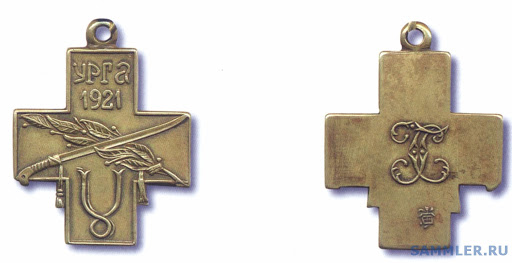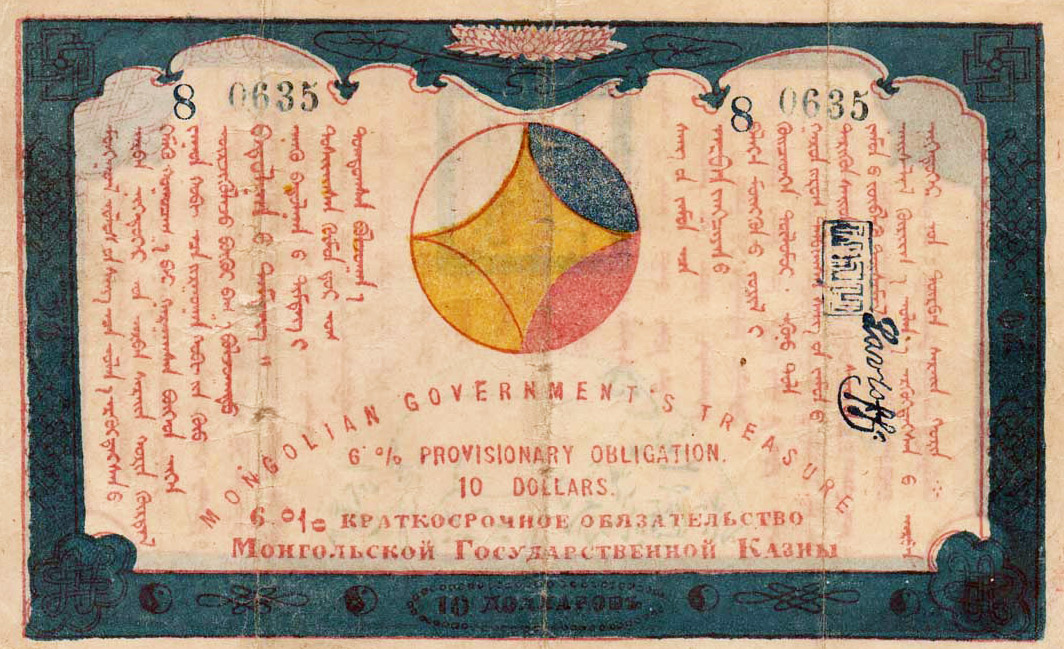At this time Baron Roman von Urgern-Sternberg, also known as the “Mad Baron” and the “Bloody Baron”, “began his bloodbath in Mongolia. Urgern’s invasion of Mongolia immortalized his name and altered the course of Mongolia’s destiny.
The Baron’s Faulty Calculations
It still remains a mystery whether Semenov knew that Urgern, commanding his troops, had entered Mongolia in October 1920. Nonetheless, he had a major dispute with Semenov ad did not receive orders from him to infiltrate Mongolia. As Urgent later stated, he may have thought after he came to Mongolia of his own accord, that Semenov and the Japanese would be drawn in after him. Despite his calculations, the Japanese expressed disapproval because they thought by fighting the “Anhui” soldiers he was assisting Sun Yatsen.
The Baron’s Declaration
When Urgern entered Mongolia near the Onon River the locals gave him a hearty welcome. The Mongols supposed that the Tsar himself had dispatched him to drive out the Chinese soldiers and liberate Mongolia. When Urgern entered Mongolia, his so-called “Asian Cavalry Division” was almost eight hundred men strong, including a four hundred-man Tatar first cavalry regiment, Annikov’s two hundred-man second regiment, six artillery divisions, and twenty-five machine-gun. The Mongols, whose hatred of the Chinese had reached a critical point, saw Baron Urgern as their savior and they joined his army and gave him fresh supplies. He was aware of the Mongols; expectations and he endeavored to arouse Mongolian support by claiming that his purpose was to liberate Mongolia from the Chinese, to restore the Bogd Khan to his rightful throne and to revive autonomy.
The Baron’s Victory
The Baron recruited Mongols to strengthen his forces and attacked Huree on October 26, 1920. He was stopped by two thousand Chinese troops. After ten days of battle, Urgern had no choice but to retreat. Confused, the Chinese deployed additional forces from Kyakhta to Huree and also mobilized Chinese nationals. The Bogd and several other important nobles were put under house arrest on charges of having a connection with Urgern, which actually benefited Urgern. He was able to mobilize many Mongols by claiming that he would free the Bogd from the Chinese and revive religion.
In early 1921, he made a surprise attack on the Chinese, entered the Bogd’s palace and rescued the Bogd Khan and Enh Dagina, who was transported for safety to the nearby Manzshir monastery in the southern foothills of the Bogd Uul mountains. This was a major psychological victory before his attack on Huree.
Gathered at Bogd Mountain in front of Huree, they built fires and the increasing number of fires gave the impression hat Urgern’s soldiers were multiplying day by day. Once Urgern rode into Huree alone, the Chinese were so taken by surprise that they did not manage to fire a single shot. General Xu Shuzeng who could not handle the psychological attacks, retreated towards China before the battle even began.
Afterward, Urgern ordered his army of Mongols, Russians, Buriads, and Tibetans to attack Huree. The ensuing continued for about ten days and Huree was liberated on February 4, 1921, coincidentally on the lunar new year of the Mongols.
The “Bloody” Baron
Awarded the title of Hoshoi, or double, Chin Van by Bogd Khan, Urgern soon began his pogrom, which later won him the epithet of the “Bloody Baron”. He asserted that he worshipped Genghis Khan and trusted the Mongols, but loathed the Bolsheviks and the Jews, of whom there were many in Huree. A sadistic colonel, Sepailoff, whose head was shaped like a saddle, was appointed the governor of Huree by Urgern. He was insane and a natural-born murderer. He would not be satisfied until all the Jews and Bolsheviks supporters in Huree were killed. Kucherenko and Gemberzhevskii, who were connected with the Consular Hill group, were murdered at the same time.
Xu Shuzeng’s troops who were concentrated near Kalgan were planning another offensive; they encountered Baron urgern and his troops in late March and a large battle took place near Choir. It is said that the bleached skeletons of the dead were found there in the open for many years to come. About three to four thousand Chinese soldiers were killed, marking the end of the Chinese military until little Xu. Word of Urgern spread to Beijing, causing worry that the “Mad Baron” might invade Beijing after taking over Outer Mongolia. Baron Urgern returned to Huree in April with a large hoard of arms and ammunition. He collected 10000 rifles in Choir, which was more than enough to arm his troops.
The main force of the Chinese army had fled to Kyakhta but soon marched south. They had no intention of taking over Huree. The five or six thousand devastated soldiers who were desperate to return home were soon met by Urgern. Urgern easily defeated the huge army.
The Situations Surrounding the Baron
Urgem’s invasion of Mongolia and the prolonged battle for Huree caused more than fifteen thousand refugees to flee Mongolia. The South Manchurian railway carried 1270 of them to Mukden where they went on to Tianjin. Among the refugees were Americans, Europeans, Koreans and Japanese. The Americans held a neutral position-they supported neither the Chinese nor Urgem’s people, even refusing to let them use their vehicles. The Japanese in Huree, to promote Japanese-Chinese friendship, collected one thousand yuan, which was donated to the Chinese military authorities. Many Japanese in fact served in Urgern’s Asian cavalry division. When baron Urgem invaded Mongolia he recruited some fifty Japanese volunteers from Semenov’s troops.
The Baron’s Reform
The Baron stayed in Mongolia for only ten months, from the end of 1920 until August 1921. He came to power only after he freed Huree and instantly rid the city of its trash. He restored trade which had previously been in decline, by issuing bonds into the market named the “Baron’s reserve”.
Urgern’s Letter to Bogd Khan
Baron Urgern, of the Russian imperial lineage, continuing the Russian-Mongolian traditional friendship, has come with the objective of assisting you, Bogd Khan, in liberating Mongols from Chinese oppression and reviving the old state system. Hence, I request you to grant permission for my soldiers to enter into Huree.
Chronology
- 1920, October: The White Army, led by Baron Urgern Stenberg, crossed the eastern borders of Mongolia.
- 1921, February 4: Urgern liberated Huree.
- February 11: Urgern returned the Bogd Khan to the throne, revived Mongol autonomy and established five ministries.


